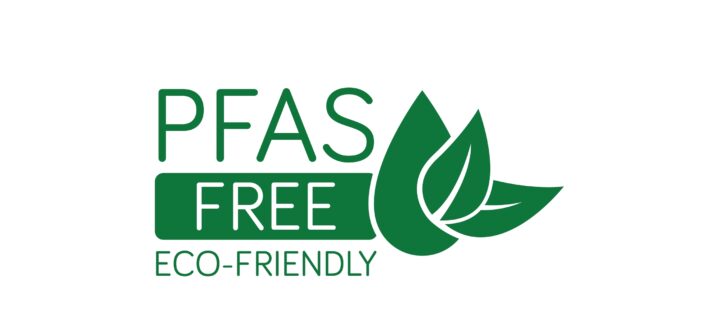A proposed Environmental Protection Agency (EPA) rule that would label per- and polyfluoroalkyl substances (PFAS) as hazardous is expected to increase transparency and accountability, but defense attorneys say it could also lead to a tidal wave of litigation.
“We’re going to see a lot more reporting requirements and companies being required to report releases of PFAS,” said Brian Moskal, a partner at the Greenberg Glusker law firm in Los Angeles. “Where there’s reporting, there’s litigation.”
Separately, the EPA issued a proposed rule setting enforceable PFAS standards for drinking water.
“Both of these were expected, but the acceleration of litigation over the last couple of years has been a little bit surprising,” Mr. Moskal said. “It’s just taken off.”
The Greenberg Glusker law firm represents electroplating companies that have received information requests from California regulators about their use of PFAS over the years.
Known as forever chemicals, PFAS are allegedly deadly manmade chemicals found in firefighting foam, firefighting gear, drinking water and consumer products such non-stick cookware and food packaging.
“Part of the problem is that these PFAS substances are so effective,” Mr. Moskal told PacerMonitor News. “They’re resistant to water, oil, heat, and so they’re really good at doing their job, and particularly when you talk about firefighting substances, they are good at putting out fires.”
Claims have been filed by states, municipalities, professional associations and individuals with some alleging environmental harm and seeking clean up compensation under the Comprehensive Environmental Response, Compensation, and Liability Act (CERCLA).
CERCLA was established by Congress in 1980 to levy a tax on chemical and petroleum companies so that federal authorities have the money to clean up hazardous waste sites, such as Portland Harbor Superfund Site in Oregon and Diamond Apple Superfund Site in New Jersey.
“Where these companies have to incorporate PFAS into their testing regime, they are finding the substance at a lot more sites than expected and as companies begin spending additional dollars to test for and remediate PFAS, they are going to be looking for other responsible parties to sue,” Mr. Moskal said in an interview.
For example, the city of San Diego sued 3M, DuPont and Raytheon along with more than 17 other companies last year alleging they concealed their knowledge of deadly toxic chemicals in manufacturing firefighting foam, which caused contamination and lead to the development of cancer, fertility issues, kidney and liver damage.
San Diego operates its own municipal water treatment system.
“Water municipalities have standing,” said Craig Silverman, an attorney at the Sullivan Papain Block McGrath Coffinas and Cannova law firm in New York. “If it’s the city suing because of harm to their water supply, they have a real injury, which is a need to clean up the water to safe levels.”
But PFAS product liability plaintiffs alleging failure to take due care, fraud and negligence face the same challenge in discovery as firefighting foam and water contamination litigants in their need for a smoking gun.
“Plaintiffs’ lawyers are keenly interested in what does the industry know and when did it know it? So, until discovery starts happening and documents start getting produced and depositions start getting taken, it will be tough to know what specific companies knew about the potential harms and when they knew it,” Mr. Moskal said.
In Hamman v CAVA Group, a federal consumer class action lawsuit accusing the Mediterranean restaurant CAVA of using PFAS-laced food packaging, plaintiffs were handed a victory recently when Southern District of California Judge Michael Anello allowed the complaint to proceed.
“Plaintiffs plead economic injury by asserting that they would not have purchased Defendant’s Products or would have paid less for them had they known the truth about the Products—that their packaging contained “heightened levels of organic fluorine,” an indicator of PFAS,” Judge Anello wrote in his Feb. 8 order. “This is plausible because Plaintiffs allege that based on the Consumer Reports article, similar studies and reports, and their own tests, the Products are likely to contain PFAS and that PFAS are dangerous even in small quantities.”
The Consumer Reports article entitled ‘Dangerous PFAS Chemicals Are in Your Food Packaging’ was published in March 2022.
Mr. Silverman is among the lawyers who signed off on a lawsuit filed a month ago on behalf of the International Association of Fire Fighters (IAFF) against the National Fire Protection Association (NFPA) alleging that their standard imposes criteria that requires the use of PFAS-tainted gear.
Among the causes of action listed in the March 16 complaint is civil conspiracy.
“We believe industry was funding the NFPA and had reason to want that standard to require PFAS chemicals,” Mr. Silverman told PacerMonitor News. “The UV standard can’t be achieved without a PFAS chemical. We’re trying to get the standard changed, and that’s why we filed the suit so that we can achieve a marketplace or an environment where manufacturers must put out PFAS-free gear.”
While industry seeks PFAS substitutes, 3M has announced it will end its production of PFAS by 2025. Other companies are expected to eventually follow in 3M’s footsteps.
“As they pay millions and millions of dollars in settlements, they will accelerate their move away from PFAS because they will find carrier insurance much more complicated,” Mr. Moskal added.






